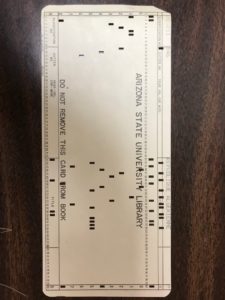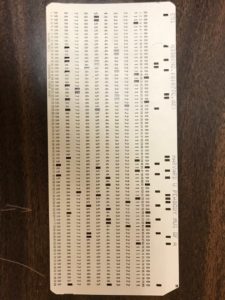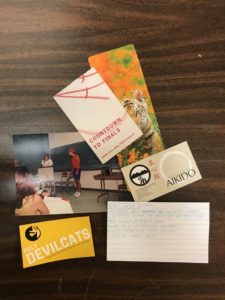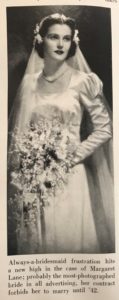Validation at ASU
WEST’s unique tiered archiving structure is based on electronic availability and the risk of content loss if the physical material is damaged, lost, or otherwise unavailable. The WEST Archive Builders put high risk materials through a physical validation process as part of the regular archiving activities, proactively identifying gaps and damaged areas and creating a trustworthy backfile members can rely on.
An added perk of the validation process is the opportunity to come into contact with ephemera and other print culture artifacts as well as the published content within the materials themselves. Our colleagues at Arizona State University have been generous enough to share some of their experiences coming across these artifacts during validation:
We often remove loose items that are stuck in the volumes. These things typically correspond to the item’s usage, both in and out of the library. I have seen many binding receipts, a 1928 postcard from the postmaster asking for more money for postage for a “Wilderness magazine,” old bookmarks, photographs, business cards, study notes, even punch cards from the very early days of computers. If you look closely at ASU’s punch cards, they have the Call # and Title of the item. On their own, they aren’t very interesting…but we keep them as a novelty. Typically, a new employee who finds an “Arizona State University Library” punch card asks what they are, as they appear more similar to “train tickets” than any modern data storage device. At times, we may experience a fleeting thought about how far libraries and computers have come, before we toss cards in the recycle bin. These “book traces” imply this small glimpse into the history of library work and the many times that various staffers and library patrons have touched these items. I have taken a picture of some random things found in materials … an old photograph … business cards … bookmarks … someone’s “To Do” list from December 9 2015, which included researching “Macbeth” and studying for a “French quiz.”
Additionally, Zarinna Davila, a student employee at ASU Library, was inspired to research working women and marriage during World War II after coming across an image in an issue of “Advertising & Selling” from 1938 of a bridal wear model who was contractually prohibited from marrying until 1942. This image plus pictures of items found in journals during validation are available below, and Davila’s essay describing what she found in her research is available for your perusal: Always the Bride Never the Bridesmaid.




